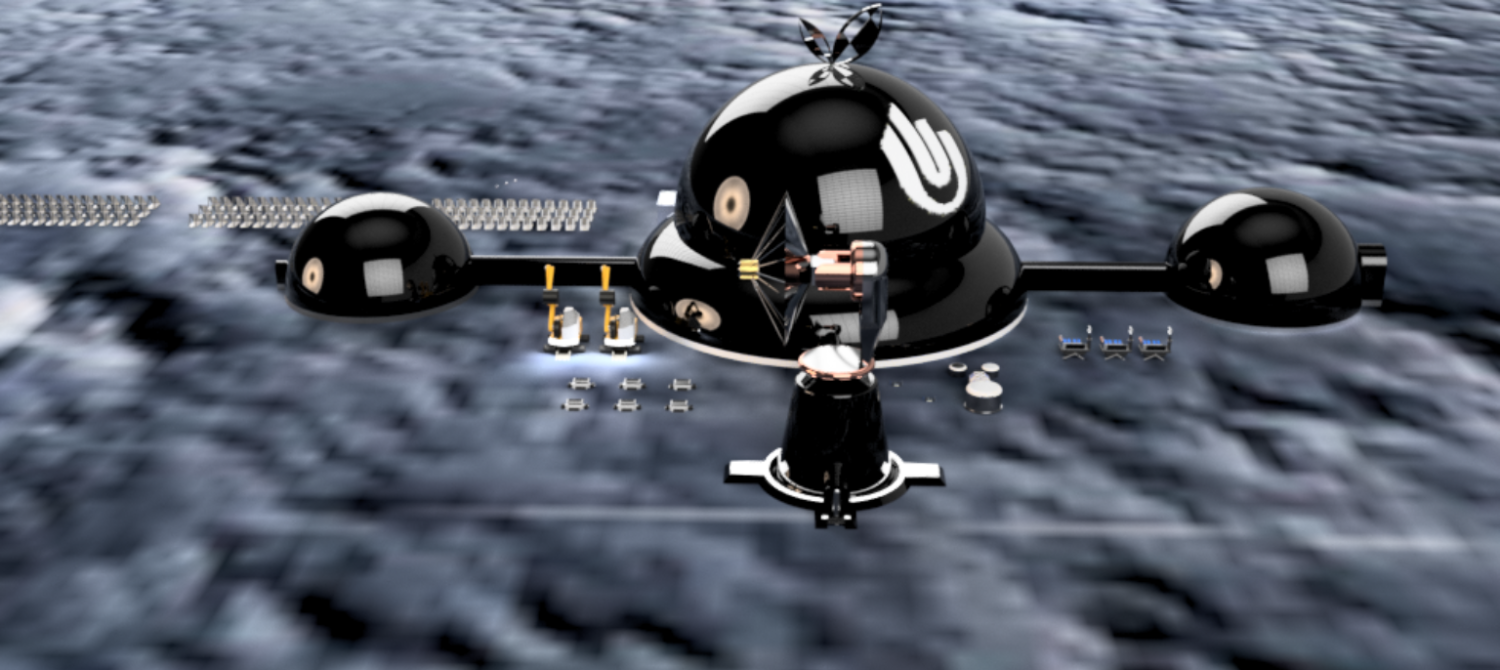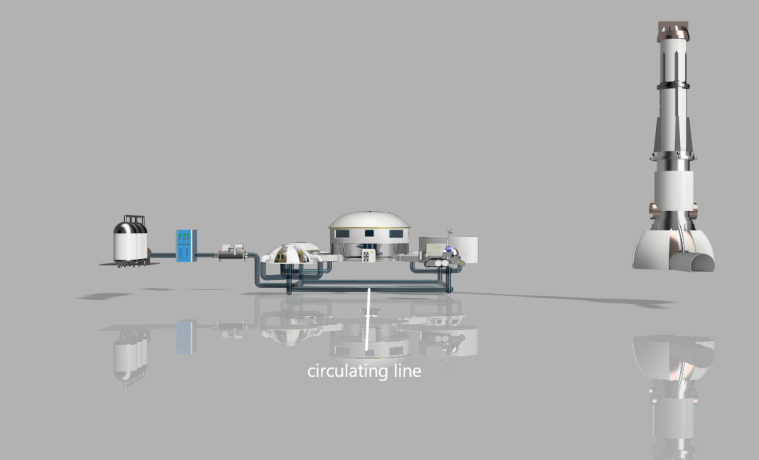Moon Camp Pioneers Gallery 2021-2022
In Moon Camp Pioneers each team’s mission is to 3D design a complete Moon Camp using Fusion 360. They also have to explain how they will use local resources, protect astronauts from the dangerous of space and describe the living and working facilities.
Team: To Infinity and Beyond
Agrupamento de Escolas do Restelo Lisbon Portugal 15, 16 2 / 2
External viewer for 3d project
|
Project description
Located in a crater situated on the southern pole of the Moon, our Moon Camp will allow for two astronauts to conduct scientific experiments while protected from radiation, meteorites, large temperature changes and the lack of atmosphere. |
|||
|
2.1 Where do you want to build your Moon Camp?
The Camp, the central point of the entire lunar operation, will be located in a crater because this is the easiest to access and will waste less resources in the most crucial moment: the landing. The chosen crater, the Shackleton Crater for example, will be on the south pole of the moon so that it is close to the abundant amount of water ice – our primary source of water. The Camp will be attached to the walls of the crater, away from the Sun’s rays, protecting the Camp from some radiation and large fluctuations in temperature. 2.2 How do you plan to build your Moon Camp? Describe the techniques, materials and your design choices.
Robots shall effectuate the construction of the Moon Base as to avoid precious oxygen and water from being unnecessarily wasted. This task shall be done using 3D printing and regolith. 2.3 The environment on the Moon is very dangerous for the astronauts. Explain how your Moon Camp will protect them. (maximum 150 words)
Meteorites, radiation, no atmosphere, temperature fluctuations… The Moon isn’t a lovely place to sustain human life. So the camp will be situated on the southern pole of the Moon, close to our chosen water and power sources and where the temperature fluctuations are not as large as on other parts of Earth’s natural satellite. We plan to build the camp inside a crater, close to the edge and in permanent shade. Other than this, the inflated structures of the Camp will be in the shape of geodesic domes because these provide secure structures that can take the stress of weight exerted upon it. A layer of regolith will be 3D printed by robots that heat the regolith thus creating a solid material upon the dome, protecting it from meteorites, radiation and temperature fluctuations. Finally, the doors, when closed, will create a completely air tight atmosphere within the dome. |
|||
|
2.4 Explain how your Moon Camp will provide the astronauts with:
|
Water
|
Food
|
Power
|
Air
|
|
Water will be obtained from water ice found close to the Camp. The ice will be extracted and melted by rovers and treated as they return to the Camp. After a certain amount of water has been collected (including water for drinking, showering, watering the gardens and emergency back-up water) the rovers will reside in a separate dome alongside the Camp. Once the Lab has been added, the rover will collect a few more liters of water in case it is needed for experiments. |
On the astronaut’s menu there will be: plants grown in the Garden and larvae created in a growth chamber. The Garden will be a vertical garden so that we can maximize the use of the limited space available. The plants chosen will be fast growing and the looking after of them will be done by robots. Larvae will supplement meat and, this way, the astronauts can enjoy a varied diet even when they are 384,400km away from Earth. |
The Moon Camp will run on hydrogen and solar energy. The outside robots and rovers will run on solar panels and will have a battery to store any excess energy for later. The inside robots and rovers will run on the Camp’s power system. |
The air the astronauts will breathe when living in the Camp will be obtained from the Moon’s water ice through electrolysis. Part of the oxygen produced during the electrolysis process when creating hydrogen for fuel, will be used as air to breathe. |
|
2.5 Explain what would be the main purpose of your Moon Camp.
Knowledge is humanity’s greatest treasure, with that in mind our moon camp is going to have a scientific purpose. Being in an environment such as the Moon, where no one has ever lived for a prolonged period of time, can allow many scientific breakthroughs and studies to be done. We believe that experiments and scientific research done in and out of the lab will open new horizons. The discoveries made will make small “steps” for man and a giant leap into space and human condition. The Moon shall benefit humankind much more by providing us with new information such as: how the human body reacts to this new environment, the moon’s exosphere and much, much more. |
|||
|
3.1 Describe a day on the Moon for your Moon Camp astronaut crew.
After a pleasant 8.5 hour sleep in the Dormitory, our Astronaut wakes up at 7:30 in the morning to the sound of the alarm on his watch indicating his following task – check the Life Support Systems. He heads towards the entrance of the Camp and checks the screen which shows things such as oxygen levels, air pressure, etc., without which, these astronauts would not be able to live on the Moon. Everything seems to be normal. He swipes the screen of his watch each time a task has been accomplished, which then sends Earth an indication that his task has been completed. |
|||







